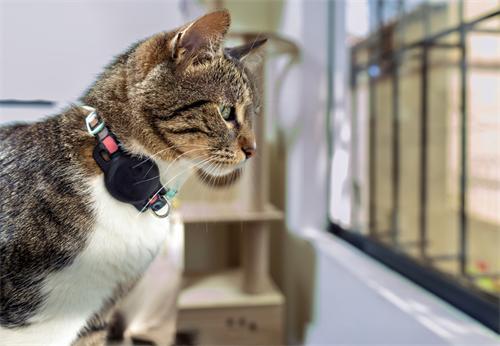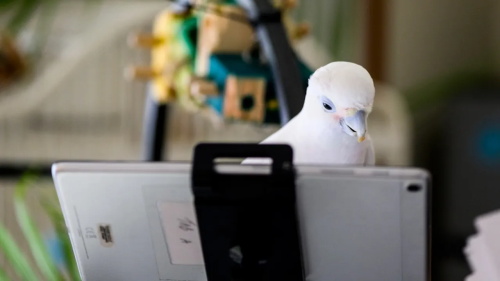How to Choose Pet Tech That Provides Real Health Insights?

In the age of smart homes and connected devices, it's no surprise that our pets are also benefiting from technological innovation. The pet tech industry has boomed in recent years, with everything from GPS trackers and smart feeders to collars that monitor heart rate and stress levels. However, this wave of innovation has also brought a wave of flashy gadgets—many of which claim to revolutionize pet care but offer little more than visual promise.
If you've ever wondered which products truly improve your pet's health and which are just clever marketing gimmicks, you're not alone. Choosing pet tech that provides real health insights, not just gimmicks, requires skepticism, research, and understanding which products truly benefit your pet's health.
The Growing Demand for Pet Health Monitoring
Pets, like humans, can experience subtle health issues. Cats and dogs instinctively hide signs of illness or discomfort—a behavior inherited from their wild ancestors' desire to avoid vulnerability. As a result, pet owners may not detect these early warning signs until the problem becomes serious.
This is where technology comes in. Smart collars, health trackers, and connected feeding devices offer unprecedented capabilities: continuous, non-invasive monitoring of your pet's health and behavior. These tools don't replace veterinary care; rather, they complement veterinary care by continuously collecting data between checkups.
Imagine being able to check your dog's heart rate, temperature, and activity level daily on your phone, or noticing a significant change in your cat's sleep patterns over the course of a week. These subtle details can reveal early signs of illness, anxiety, or dietary issues before they become emergencies.
What makes pet tech truly valuable?
With so many options on the market, it's crucial to distinguish between practical features and marketing noise. Here are some key points to consider when evaluating whether a device provides true health insights.
1. Continuous Vital Sign Monitoring
Devices that measure core health indicators (such as heart rate, temperature, and respiration) can alert owners to changes before noticeable symptoms arise. High-quality pet tech products go beyond simply tracking these indicators sporadically; they continuously collect and compare this data to establish a baseline for your pet's health.
For example, if your dog's average resting heart rate suddenly spikes, or your cat's temperature remains above normal for several consecutive days, you'll know it's time to visit the veterinarian. This proactive insight can be lifesaving, especially for older pets or those with chronic illnesses.
2. Behavior and Mood Tracking
One of the most exciting areas in pet tech is AI-powered behavioral analysis. Modern collars and devices can monitor subtle behaviors, such as scratching, licking, barking, eating, and drinking. These can reveal hidden clues about a pet's physical or emotional state.
For example, excessive licking may indicate allergies or anxiety; frequent scratching could indicate skin irritation or fleas. A device that continuously detects and categorizes these behaviors can help owners make more informed decisions, rather than relying on guesswork.
3. Sleep and Activity Analysis
Healthy pets have regular sleep and activity patterns. Devices that track a pet's sleep quality, rest periods, and daily movement can help you understand if something is unusual.
A sudden decrease in activity may indicate pain or lethargy; restless sleep can indicate stress or discomfort. Conversely, consistent, balanced activity is a sign of good health. These insights are particularly useful for managing pets recovering from surgery, those with obesity, or those experiencing anxiety.

4. Integration with Veterinary Care
The most meaningful technology is valuable not only for pet owners but also for veterinarians. Devices that sync with or directly share health data with veterinary platforms can improve appointment scheduling.
Instead of explaining vague symptoms, you can provide your veterinarian with weeks of accurate health data. This helps them identify trends and more accurately diagnose conditions. Integrations also allow veterinarians to remotely monitor treatment progress, saving time and reducing stress for both pets and owners.
5. Data Accuracy and Transparency
The accuracy of data collection can make the difference between a device being helpful or misleading. If a tracker misinterprets a pet's heart rate or sleep cycles, it could cause unnecessary concern or even lead you to overlook a real problem.
When choosing pet tech, check whether the product has been clinically tested or developed in collaboration with veterinarians or animal health experts. A transparent data policy—explaining how information is measured, stored, and used—is also crucial, especially if you value privacy and reliable insights.
How to Identify Gimmicks in Pet Tech?
Behind every truly innovative device lies a slew of hype. These devices may appear shiny and promising, but in reality, they offer limited functionality or even unreliable features. Here's how to distinguish them.
1. Overpromising Results
Be skeptical of products claiming to "cure anxiety," "enhance intelligence," or "extend lifespan." Technology can help with prevention and monitoring, but it can't replace good nutrition, regular veterinary checkups, and love and attention.

2. Lack of Scientific Support
Significant pet health tech often has veterinary partnerships, certifications, or published data proving its effectiveness. Gimmicky gadgets often rely on buzzwords like "artificial intelligence" or "smart" without any evidence that these features actually improve pet health.
3. Limited Functionality
True health monitoring devices continuously collect and analyze multiple data points. If a product only measures a simple metric—like steps or calories burned—it may be more like a novelty fitness tracker than a health tool.
4. Poor User Experience
Confusing apps, short battery life, or frequent syncing issues can let even excellent products down. Real health tech should offer intuitive dashboards, easy-to-read summaries, and long-lasting battery life—especially for active pets.
5. Focusing on style over function
Many devices attract buyers with sleek designs or flashy lights, but fail to provide sufficient health information. Choose substance over style: a reliable, durable collar with robust analytics will always outperform decorative gadgets.
Top Pet Tech Devices That Provide Real Insights
As the market continues to grow, some devices stand out by combining reliable data collection, veterinary integration, and user-friendly design.
1. Smart Health Collars
Advanced collars are at the heart of modern pet tech. They track your pet's vital signs, behavior, and location, and send real-time data to your phone. They can monitor metrics like resting heart rate, sleep quality, and even stress levels using motion and temperature sensors.
2. GPS and Fitness Trackers
These devices are particularly useful for dogs who frequently venture outside or have large roaming areas. Not only can they prevent loss, but they can also analyze your dog's activity trends over time. Some devices can even differentiate between walking, running, and playing, giving you a comprehensive understanding of your dog's health and energy levels.
3. Smart Feeding Systems
Smart feeders do more than just automatically dispense food. Some can analyze portion sizes, track eating habits, and prevent overfeeding. This is particularly beneficial for pets with weight issues or on prescription diets.
4. Telemedicine Devices
A new generation of pet technology allows pet owners to connect directly with their veterinarian via an app and leverage real-time data from wearable devices. This remote health management can reduce unnecessary visits and make ongoing treatment plans more efficient.
The Future of Pet Health Tech
The pet technology sector is developing at a lightning pace, promising even deeper insights and integration. Artificial intelligence is being trained to detect early signs of illness through subtle behavioral changes—longer than humans can perceive.
Emerging technologies may soon provide non-invasive blood analysis, track hydration levels, and even predict mood changes through micro-movements and sounds. Combined with machine learning, these systems could one day provide a nearly complete picture of a pet's health.
Another exciting frontier is cross-species communication technology—devices that can interpret pets' emotional or behavioral cues, helping owners better understand their pets' needs. While still in the experimental stage, these innovations promise a future in which pet-human communication will become richer and more intuitive.
Recommended for you



